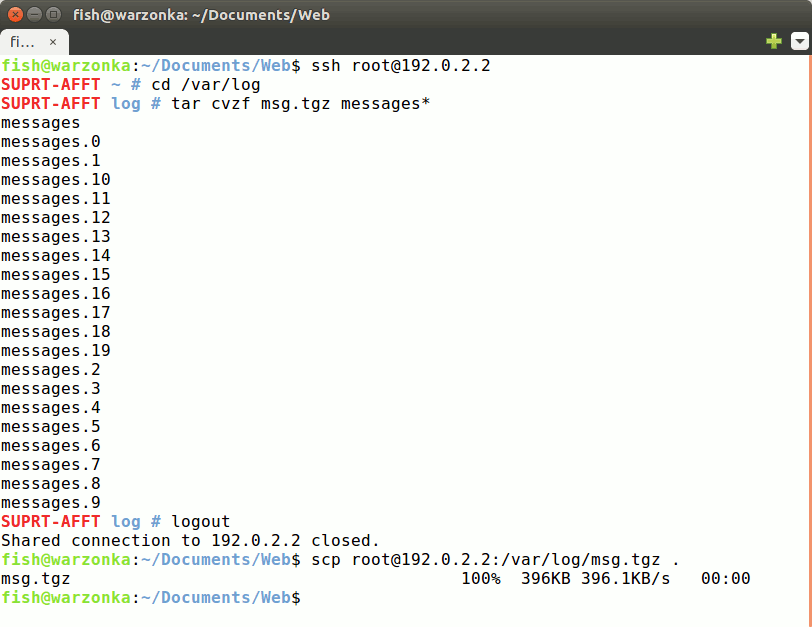How to retrieve copies of the messages* files from a Platinum system - Linux Network Connection.
Overview
The file /var/log/messages contains important diagnostic information about your Platinum systemA "platinum system" is any system running the Platinum operating system. This includes stand-alone acquisition systems such as EAMs and NAMs, DAS units such as the Affinity and DM24SxEAM and digital instruments with built-in acquisition systems such as the 3TDE, 40TDE or 5TDE.. Historical copies of this file are saved as messages.0, messages.1 and so on. Technical support staff may occasionally request that you send them copies of these files to assist in diagnosing problems with your system. This document describes how to do this using a Linux PC or laptop over a network connection.
This procedure is most easily carried out from the command line so begin by opening a terminal window. (In many distributions, you can do this by keying ctrl + alt + T).
Creating the archive
From the terminal window, log on to the command line of the Platinum system with a command like:
replacing 192.0.2.2 with the IP address or DNS name of your Platinum system.
Log in as normal and then issue the commands:
This creates a compressed archive file called msg.tgz which we now need to copy to your PC.
Downloading the file
Log out of the Platinum system by keying ctrl + d or entering the command:
You are now back at the command line of your PC. Run the command:
replacing 192.0.2.2 with the IP address or DNS name of your Platinum system. You may be asked for a password: respond with the normal root password for your Platinum system. The archive will be copied to your current working directory, from where you can email it to GSL support staff.

